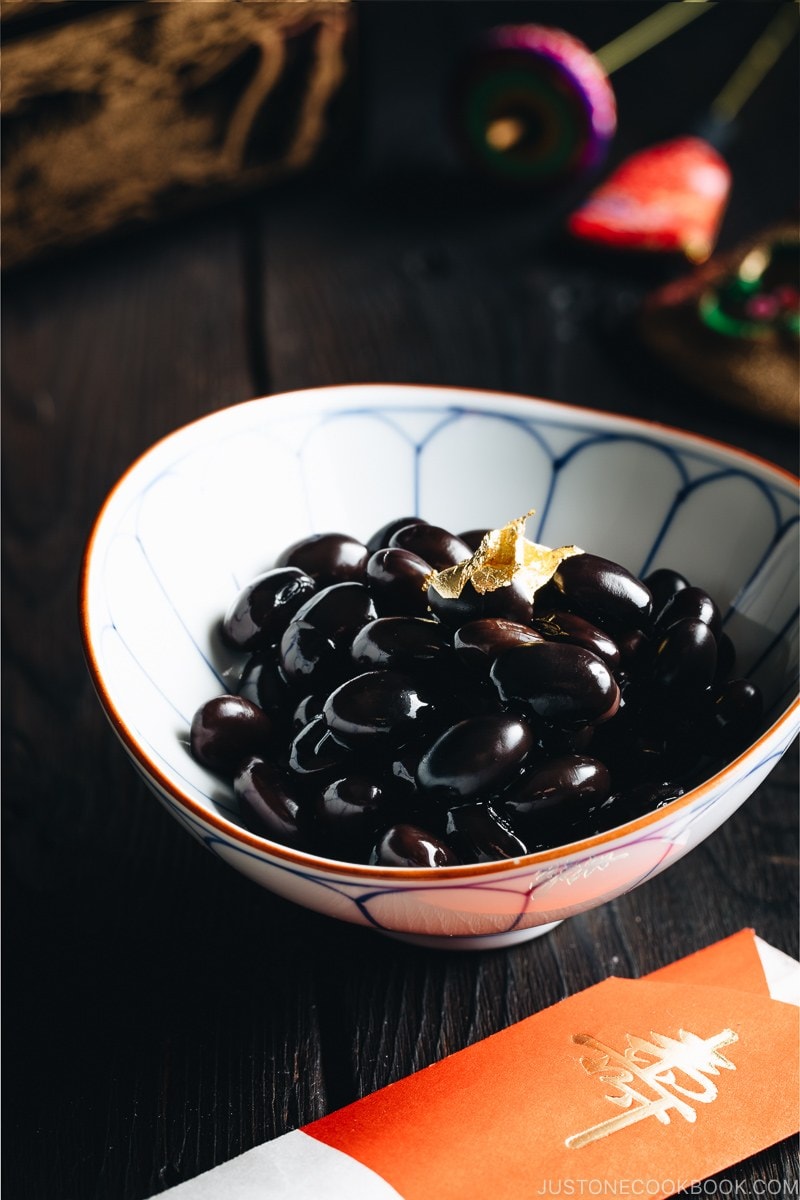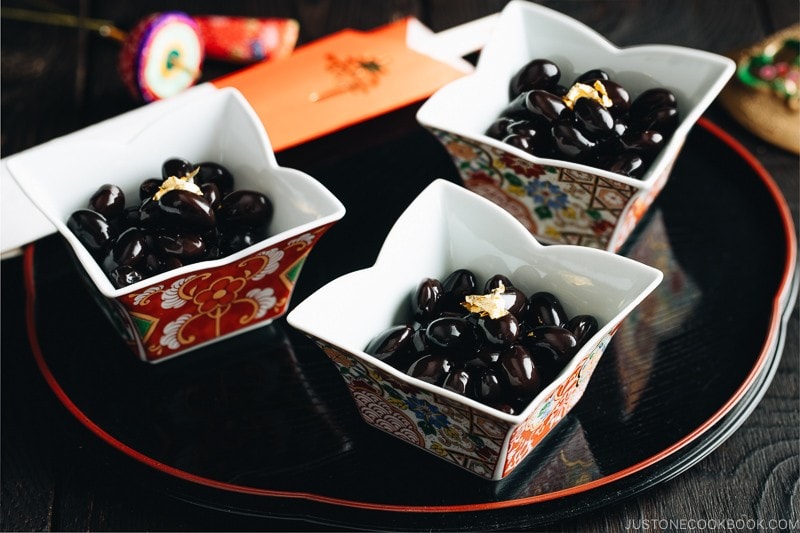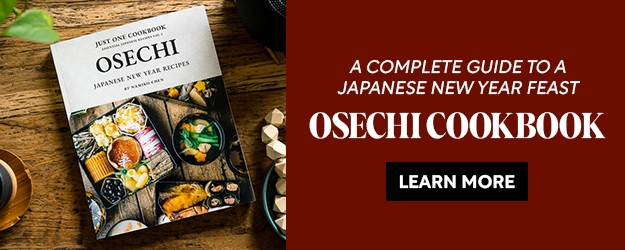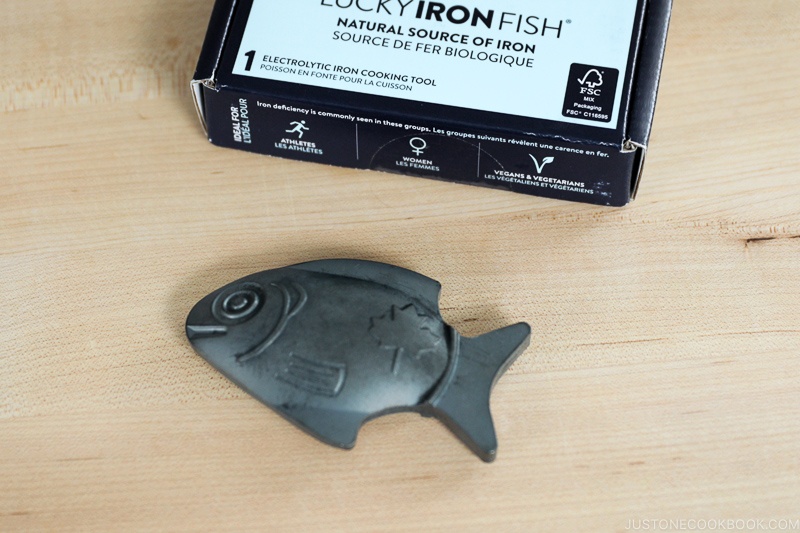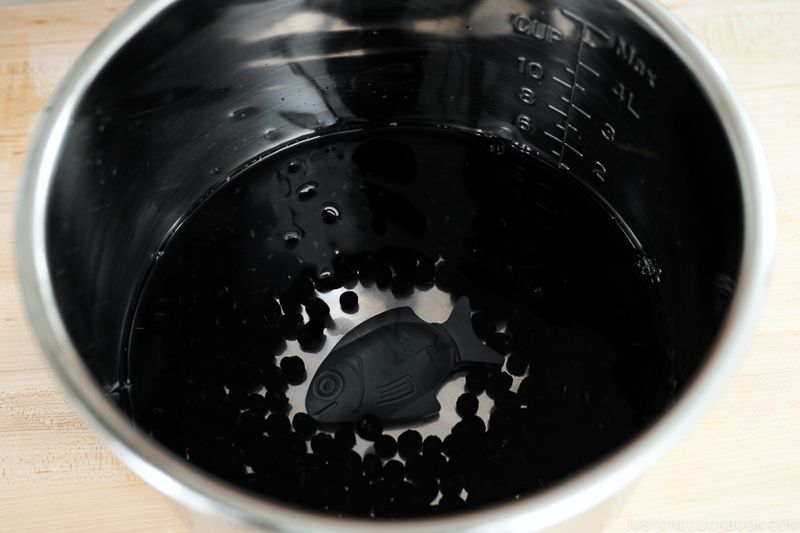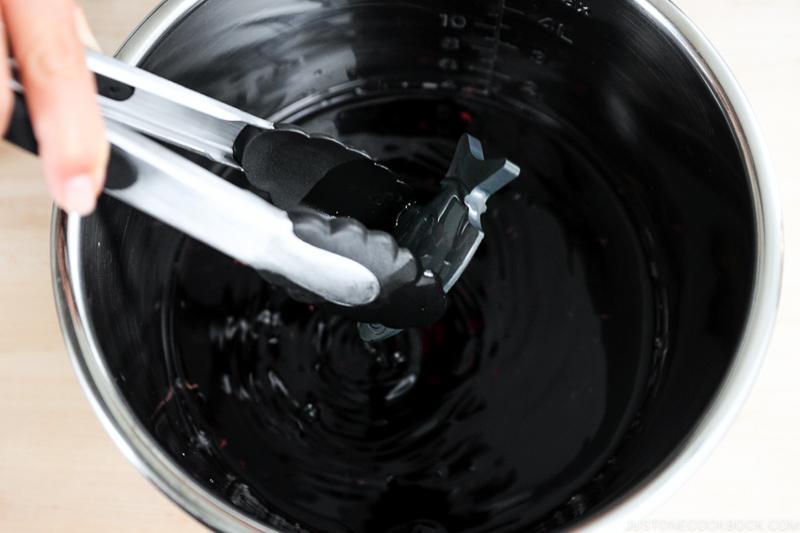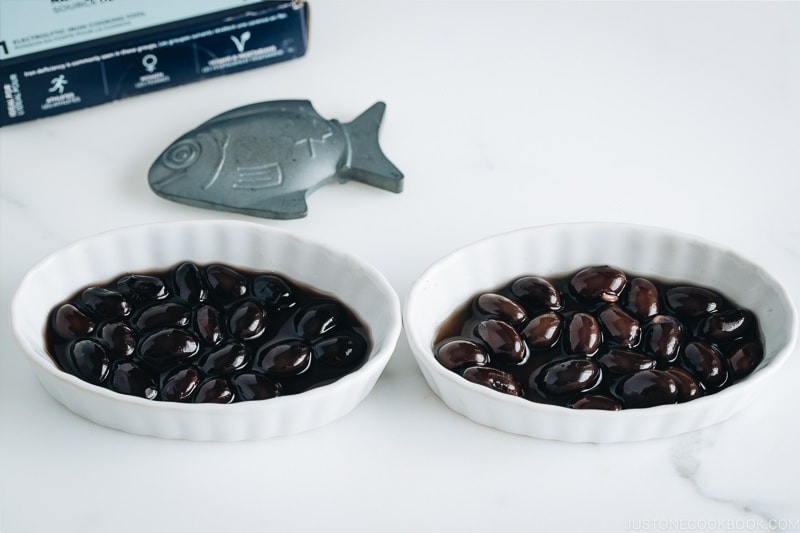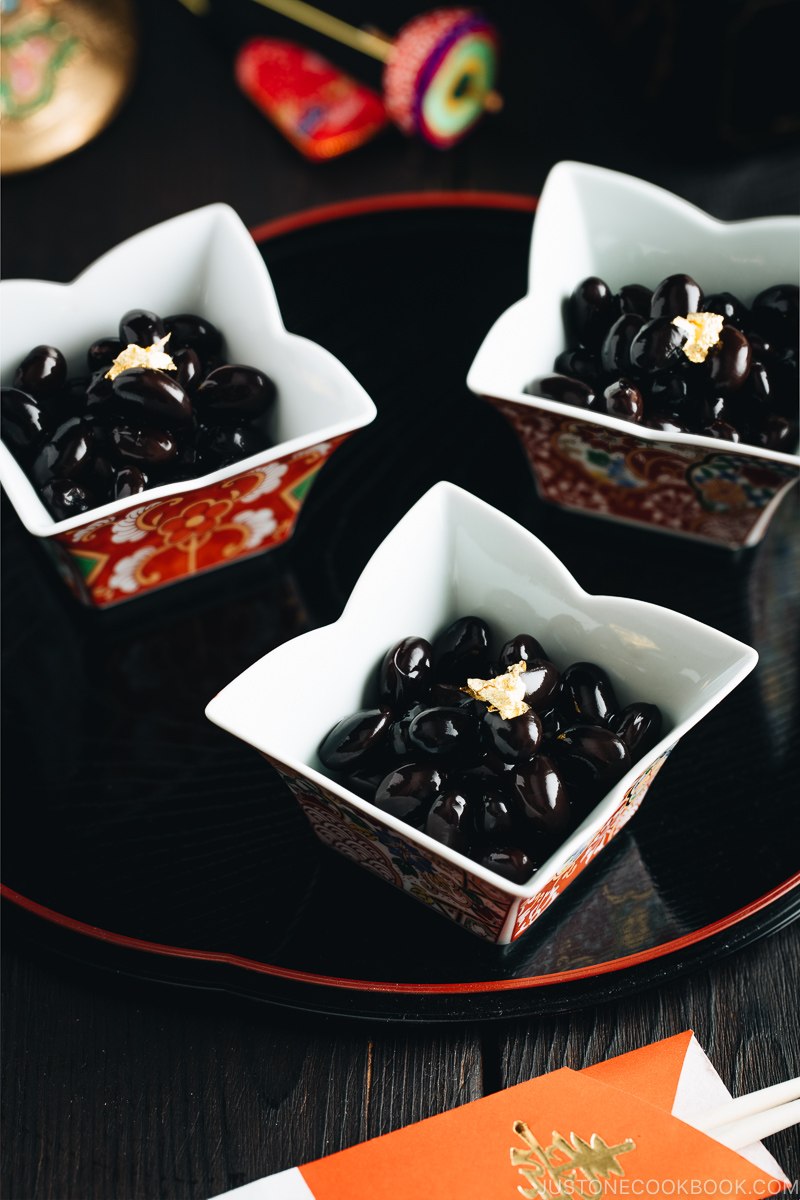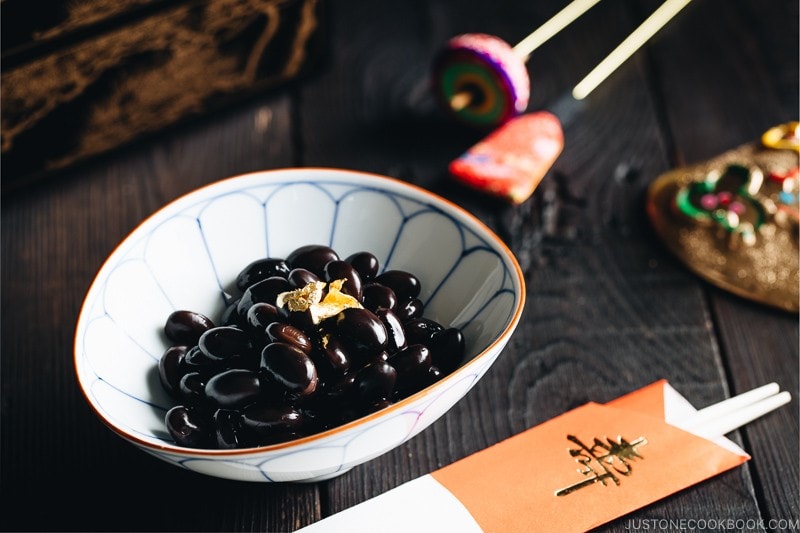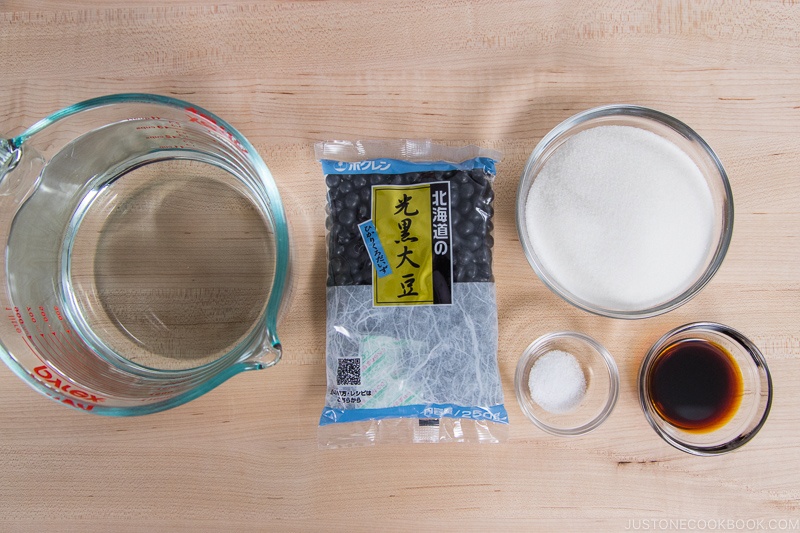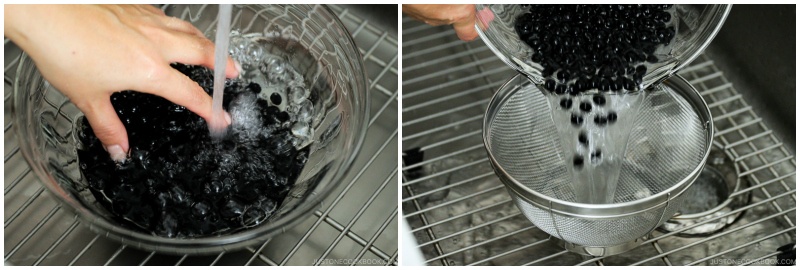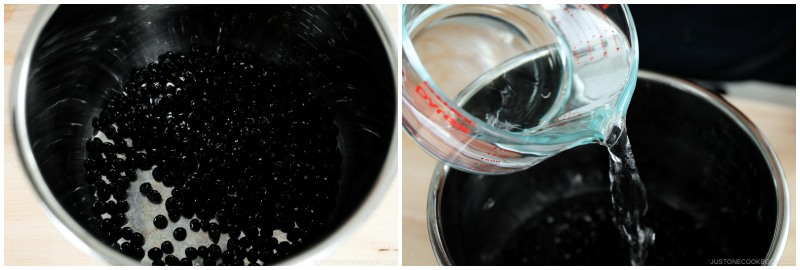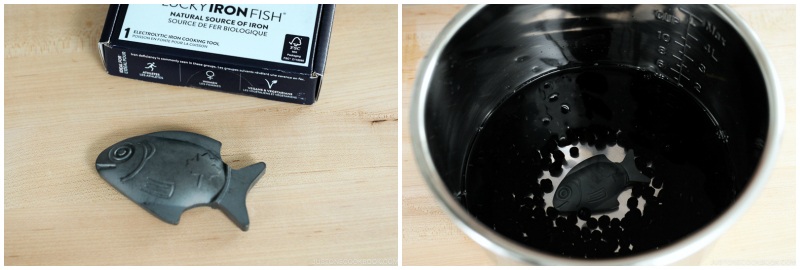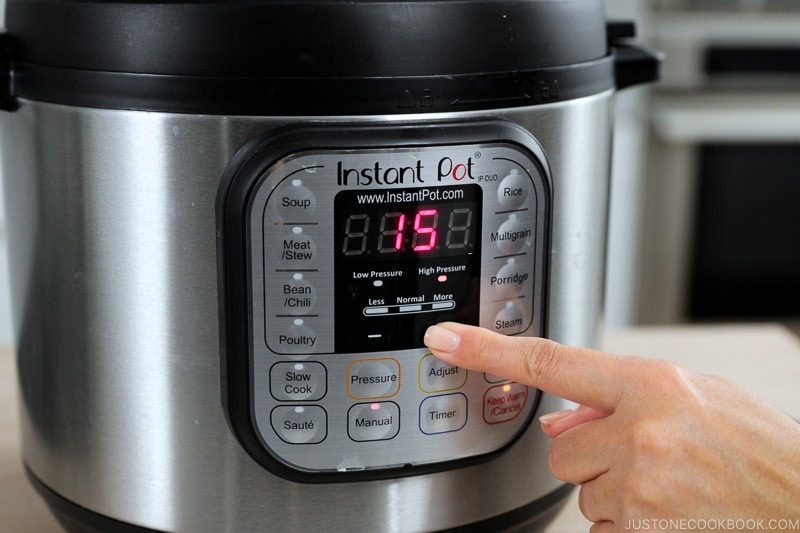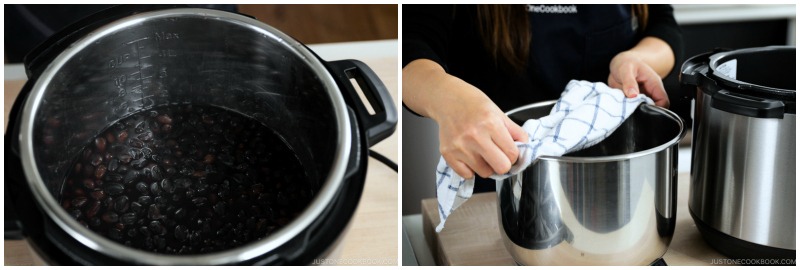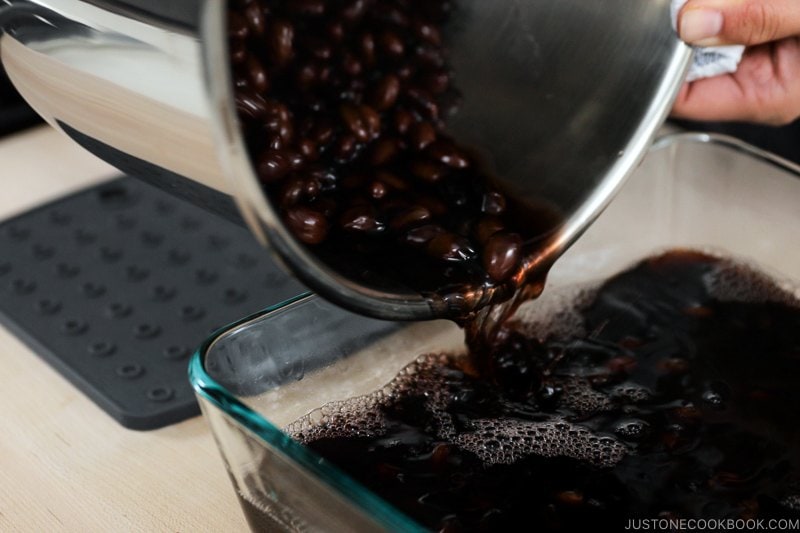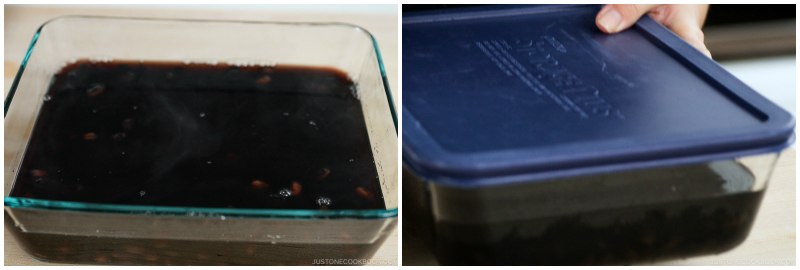One of the easiest dishes you can make for the Japanese New Year (Oshogatsu) is kuromame (黒豆) or sweet black soybeans. The soybeans are typically simmered on low heat over a long period of time in a syrup. To shorten the cooking process, we’ll cook the soybeans using a pressure cooker. This Instant Pot Kuromame recipe will save you hours in the kitchen, so you can make one more dish for your new year’s meal!
What is Kuromame?
Kuromame (黒豆) literary means black (黒) soybeans (豆) in Japanese. The soybeans are simmered in a sauce of water, sugar, soy sauce, and salt. Once cooked, they are soaked for a day in their simmering liquid to yield a strikingly glossy and black appearance. They are delightfully sweet with just a tinge of savory flavor, and are a source of protein and fiber. It’s one of the sweet dishes like kuri kinton (candied chestnuts with sweet potatoes) that are served alongside savory Osechi foods on New Year’s Day. When making kuromame, we place a great focus on the color of the black soybeans. The shinier and more intensely black they are, the higher the praise. In addition to the color, it is also important that the skin of the soybeans is not wrinkled. Shiny, pearl-like black soybeans are a subtle yet important part of Osechi Ryori.
The Secret to Very Black Soybeans
We need to soak the dried beans before cooking. During soaking, the water turns dark purplish and the black beans lose their color and become brown or reddish. Once you simmer the beans in the same water, they will regain their black or blackish color. You may wonder how to make the black soybeans even MORE black. The answer is rusty iron nails. I know, I’m about to get some raised eyebrows… While it may sound dubious, this technique has been passed down for generations. Why a rusty nail? Well, the iron oxide (the rust) has a chemical reaction with anthocyanins (chemicals that are located in the skin of black beans) that makes the beans dark. Cooks usually clean the nails and wrap them in cheesecloth to soak with the beans.
Alternatives To Rusty Iron Nails
Are there any cleaner and better “food-safety” alternative? Absolutely!
How To Use an Iron Fish
The Lucky Iron Fish is a small, cast iron cooking tool that infuses your meals with a healthy amount of natural iron to help prevent iron deficiency and anemia. It’s especially perfect for athletes, vegetarians, vegans, women, and kuromame makers like us! All you need to do is to soak the Lucky Iron Fish in the water along with the black soybeans. After 4 hours of soaking, remove the iron fish. (Update on 12/31/19: I kept the iron fish and pressure cooked in the Instant Pot, and it was fine. I recommend leaving it in the pot.) Check out the color of the water. It turns completely black! Now you can proceed to cook the black soybeans. After pressure cooking, here is the final result of the kuromame. The result is pretty obvious. How about the taste? Whether you use the Lucky Iron Fish or not, they taste the same. What if you add the Lucky Iron Fish after cooking, does it become darker? No, it doesn’t become darker. It’s too late to rectify the color.
Should You Get An Iron Fish?
Now, is it worth $30 to buy the iron fish? It might be worthwhile if you…
make kuromame every year for the Japanese New Year. need to impress your mother, mother-in-law, or Japanese guests who appreciate the beautiful black kuromame. have someone who lacks iron in their diet and takes a supplement. You can cook other food with the iron fish.
Ingredients You’ll Need
kuromame (black soybeans) – dried water sugar – granulated sugar, cane sugar, etc.; we typically use a 1:1:6 ratio of black soybeans, sugar, and water by weight, but you can adjust the sweetness to your liking soy sauce kosher salt – I use Diamond Crystal brand edible gold leaf flakes – optional, for the garnish
How to Make Instant Pot Kuromame
I recommend making this recipe 1–3 days before you plan to serve on New Year’s Day. Here’s a brief overview of the steps in this recipe: You can store the kuromame in an airtight container, with enough cooking liquid to cover them, in the refrigerator for up to 4 days or in the freezer for one month.
Don’t Have an Instant Pot or Pressure Cooker?
Don’t worry! I have a recipe for cooking kuromame in a pot on the stovetop. For that method, you’ll need a large pot with a lid and a drop lid called otoshibuta; if you don’t have one, you can make an otoshibuta with aluminum foil. One advantage is that kuromame that you boil on the stovetop with the iron fish actually has a richer color than kuromame cooked in the Instant Pot with the iron fish. I hope you will include kuromame in your Osechi Ryori menu. Here’s to good health and happiness! Wish to learn more about Japanese cooking? Sign up for our free newsletter to receive cooking tips & recipe updates! And stay in touch with me on Facebook, Pinterest, YouTube, and Instagram. Editor’s Note: This post was originally published on December 25, 2018. It’s been republished in December 2020.
